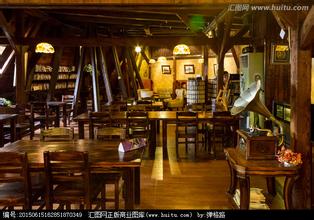Flavor description of Nicaraguan Coffee beans introduction of varieties produced in Manor
Flavor description of Nicaraguan Coffee beans introduction of varieties produced in Manor
Delicious, sweet, full-grained coffee
Republic of Dominica (Dominican
Republic) is adjacent to Haiti, both of which own the island of Hispaniola (Hispaniola). Like its neighbours, the Dominican Republic had a history of revolution and poverty, but now it has democratic elections and the country is relatively stable. Coffee was grown in the Dominican Republic in the early 18th century, and the best place to produce it was the Barahona region in the southwest, but Juncalito and Ocoa also produced a fine coffee-Santo Domingo (Santo).
Domingo) coffee is characterized by freshness and elegance, full granules, excellent acidity and pleasant aroma, so it is good value for money. Unlike coffee produced in Haiti, most of the coffee grown in the Dominican Republic has been washed, which is a symbol of high quality.
Minita), which is owned by the last three generations of the McAlpine family in England. In fact, this land can produce more than 450 tons of coffee a year. But Tarasu Latin America coffee is grown without artificial fertilizers or insecticides, and its harvesting and selection are done by hand, in order to avoid some damage to coffee beans caused by air spray selection.
Other coffees worth mentioning are: Juan
Vinas,PR, H.Tournon, Windmill,SHB, Monte bello and Ssnta
Rosa). Fine coffee is generally grown in Geredia and the central canyon. Another striking coffee is Sarchi (one of the five towns representing Costa Rica's "Coffee Road"), which grows in the Boas volcano (Poas), 53 kilometers from San Jose
Volcano) on the hillside. Saatchi, founded in 1949, has a land area of 30770 hectares and grows sugar cane and coffee. The area is also famous for its handicrafts, attracting tourists from all over the world.
The country's coffee industry was originally owned by Costa Rica Coffee Industry Company (Instituto)
Controlled by del Caf é de Costa Rica, or ICAFE), and is now under the control of the official Coffee Committee (Oficina del)
Caf é) take over. Among the exported coffee, those products that are considered to be of substandard quality are colored with blue vegetable dyes and then transferred back to China for sale. Coffee consumed domestically (dyed blue or undyed) accounts for about 10% of total production, and local per capita coffee consumption is twice that of Italy or the United States.

Important Notice :
前街咖啡 FrontStreet Coffee has moved to new addredd:
FrontStreet Coffee Address: 315,Donghua East Road,GuangZhou
Tel:020 38364473
- Prev

Introduction to the process Cooperative of characteristic Flavor, planting Environment, characteristic Price treatment of Coffee beans in Latin America
Latin American coffee beans characteristic flavor planting environment characteristic price treatment process cooperative introduction is suitable for baking: Full cityfull city, roasting to the beginning of the second explosion will start the pot, whether it is mixed with the formula to make Espresso or make a single product, Mexican coffee beans can be said to have a unique flavor. Mexican coffee from Cottpe and Veracruz in the north to Oaxaca in the middle
- Next

Flavor description of Costa Rican Black Pearl Coffee Bean introduction to the production area of Grinding scale varieties
Costa Rican Black Pearl Coffee Bean Flavor description Grinding scale Variety introduction there are eight Costa Rica producing areas, of which Tara Pearl, the Central Valley and the Western Valley are recognized as the three best producing areas. Las Lajas is located in the foothills of Sabanilla de Alajuela and Pos Volcano in the Central Valley. "Rahl.
Related
- Detailed explanation of Jadeite planting Land in Panamanian Jadeite Manor introduction to the grading system of Jadeite competitive bidding, Red bid, Green bid and Rose Summer
- Story of Coffee planting in Brenka region of Costa Rica Stonehenge Manor anaerobic heavy honey treatment of flavor mouth
- What's on the barrel of Blue Mountain Coffee beans?
- Can American coffee also pull flowers? How to use hot American style to pull out a good-looking pattern?
- Can you make a cold extract with coffee beans? What is the right proportion for cold-extracted coffee formula?
- Indonesian PWN Gold Mandrine Coffee Origin Features Flavor How to Chong? Mandolin coffee is American.
- A brief introduction to the flavor characteristics of Brazilian yellow bourbon coffee beans
- What is the effect of different water quality on the flavor of cold-extracted coffee? What kind of water is best for brewing coffee?
- Why do you think of Rose Summer whenever you mention Panamanian coffee?
- Introduction to the characteristics of authentic blue mountain coffee bean producing areas? What is the CIB Coffee Authority in Jamaica?

